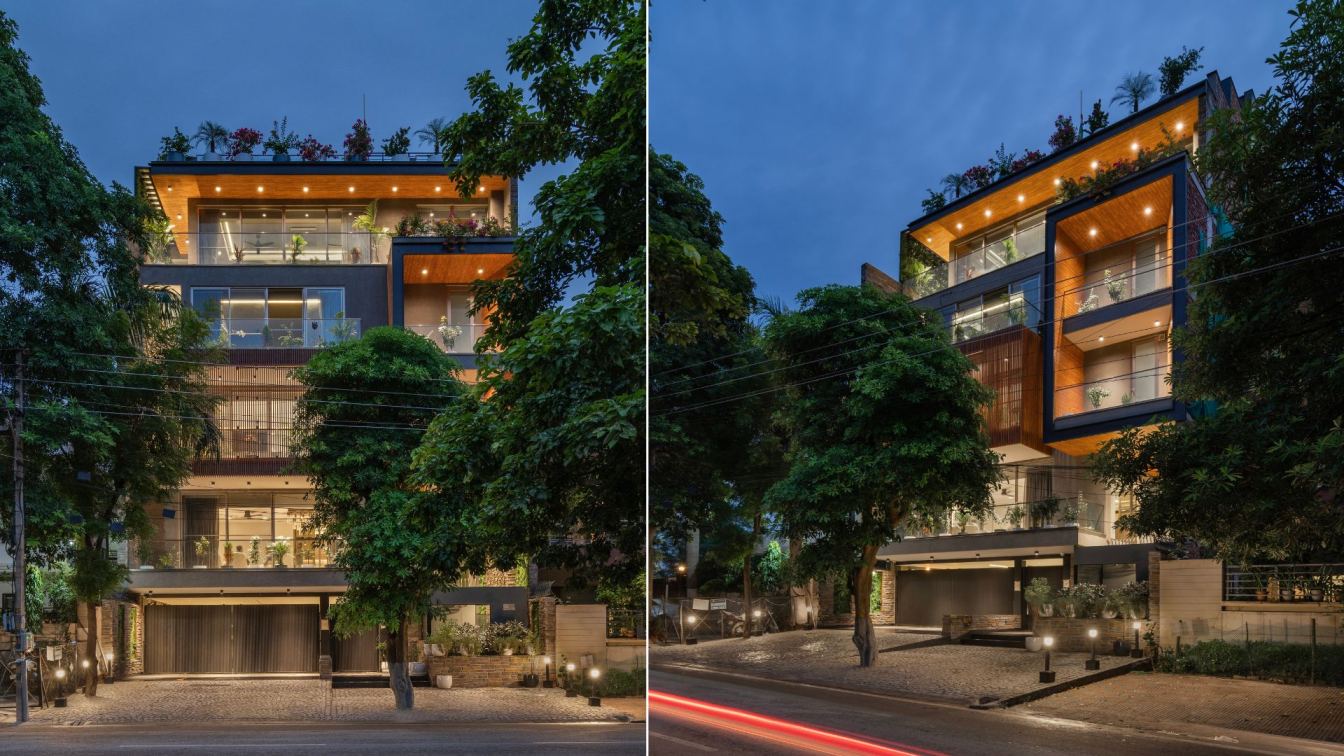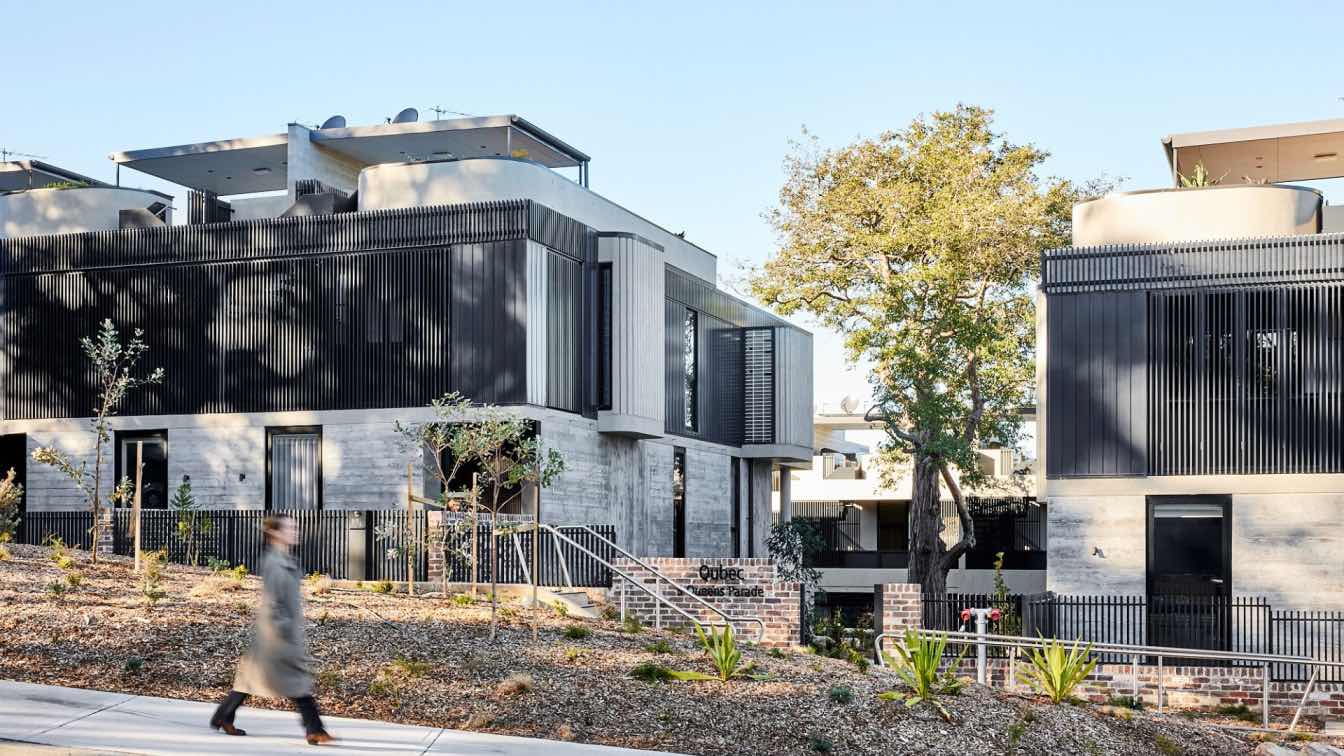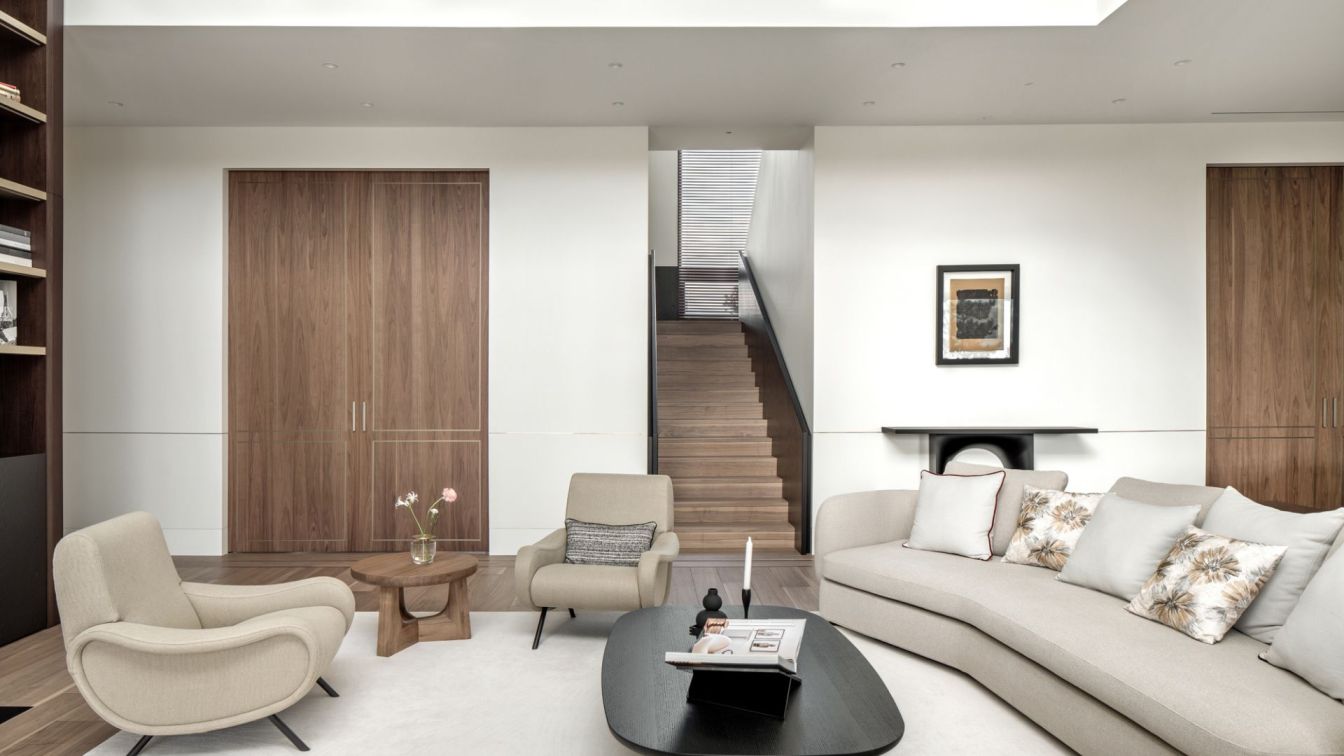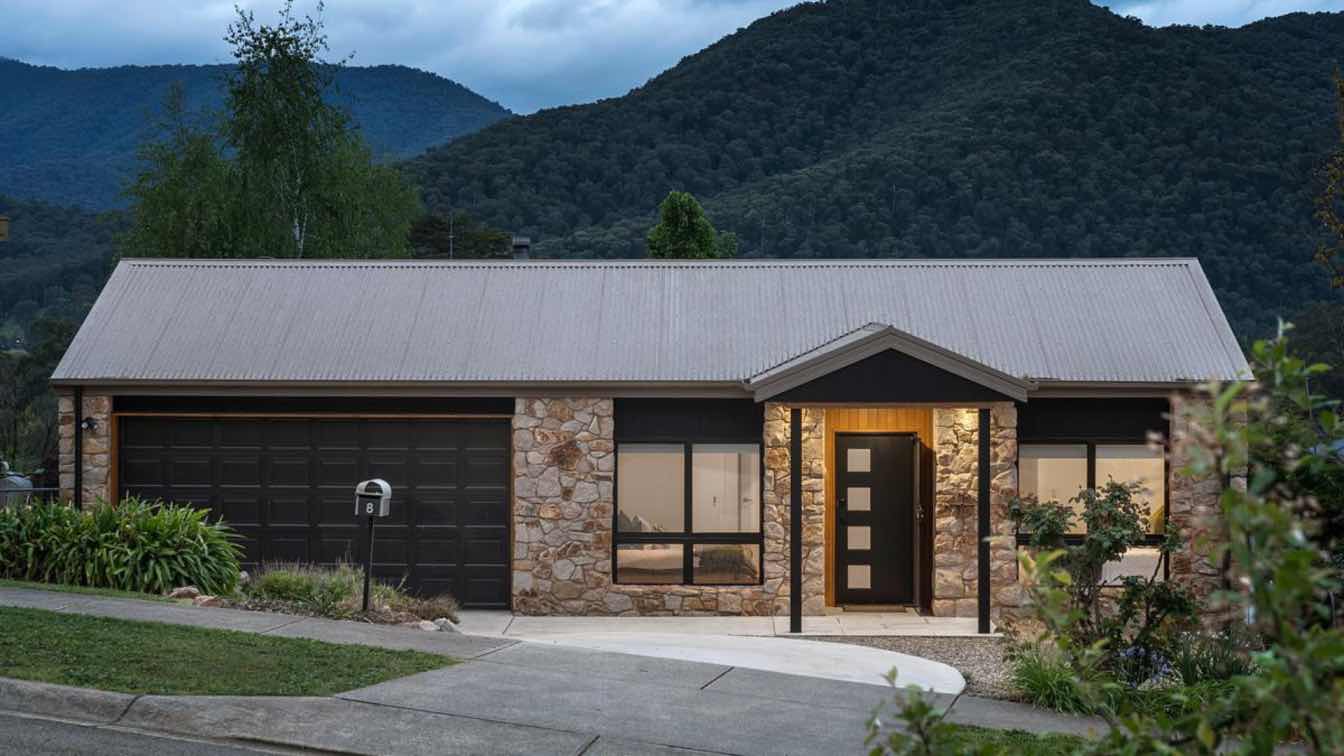Starting from an abandoned ruin overgrown with brambles, Dario Castellino has designed a refuge house that seamlessly merges with the landscape.
Immersed in the woods, Buen Retiro is the restoration and expansion of an ancient stone ruin designed by the architect Dario Castellino from Cuneo. In complete harmony with the surrounding nature, it overlooks the Stura valley in Roccasparvera, in the province of Cuneo, where the mountain gently slopes towards the river. Located in the picturesque area of Broglio (in local jargon “germoglio” or “sprout”), Buen Retiro is a virtuous sprout that revitalizes an ancient place of rural life. The project reflects Castellino’s ongoing commitment to enhancing and requalifying small alpine hamlets, as demonstrated by his interventions in the Cuneo valleys at Paraloup and Campofei.
From a partially collapsed ruin, overgrown with brambles, Dario Castellino ingeniously conceived a modern and organic expansion in burnt larch wood, with large glass surfaces. Here, nature and architecture are conceived as a spatial continuum, with constant references between the forest and the materials used, the signs, and the rhythm of the architecture.
The small and humble stone and lime agricultural structure, with a room on the upper floor and one on the lower floor, has been wisely preserved in form and materials. Targeted interventions for consolidation and roof reconstruction, using reclaimed wood from the Stura valley, have contributed to maintaining its authenticity. The connection to the pre-existing structure is made through an internal wooden staircase, located in the reconstructed and isolated old portico. The modern extension harmonizes with the stone building, respecting its integrity and visual unity. The new volume integrates gently, clearly revealing its nature as an expansion through horizontal forms and reduced height, fitting delicately beneath the long sheet metal roof.

The expansion features a precise structure with slender wooden pillars resting on a reinforced concrete slab. The walls are made of nailed wooden boards containing CalceLegnoCanapa® insulating panels, a three-component system with low environmental impact and good mechanical, seismic, fire-resistant, and insulating properties. The roof deck is insulated and made with wooden beams and boards. The southern side is characterized by large single-glazed windows, creating a visual continuity with the outside and eliminating the distinction between interior and exterior. Harmony with the natural context is ensured by the dark coloring of the frames and strips covering the insulated portions of the facade and internal partitions.
The careful choice of materials and colors to integrate with the surrounding environment is accompanied by a distinctive play of contrasts in the design. The smaller windows of the original building express a desire for protection, while the expansive panoramic glass conveys a sense of openness and complete immersion in the landscape. Through these generous windows, nature flows in and out of the house, creating an unparalleled connection between interior and exterior spaces.
Dario Castellino, a staunch supporter of the local wood supply chain in the Cuneo valleys, exclusively used wood from the area in the new construction, positively stimulating local energies and economies. He preserved the material using the Japanese Shou Sugi Ban technique, which imparts greater resistance to weathering, parasites, water, and even fire. This technique involves a superficial carbonization process followed by the application of Tung oil.
In addition, the house is completely energy self-sufficient thanks to the installation of photovoltaic panels on the roof, accompanied by an energy storage system. This off-grid residence represents a concrete commitment to a zero-emission home.














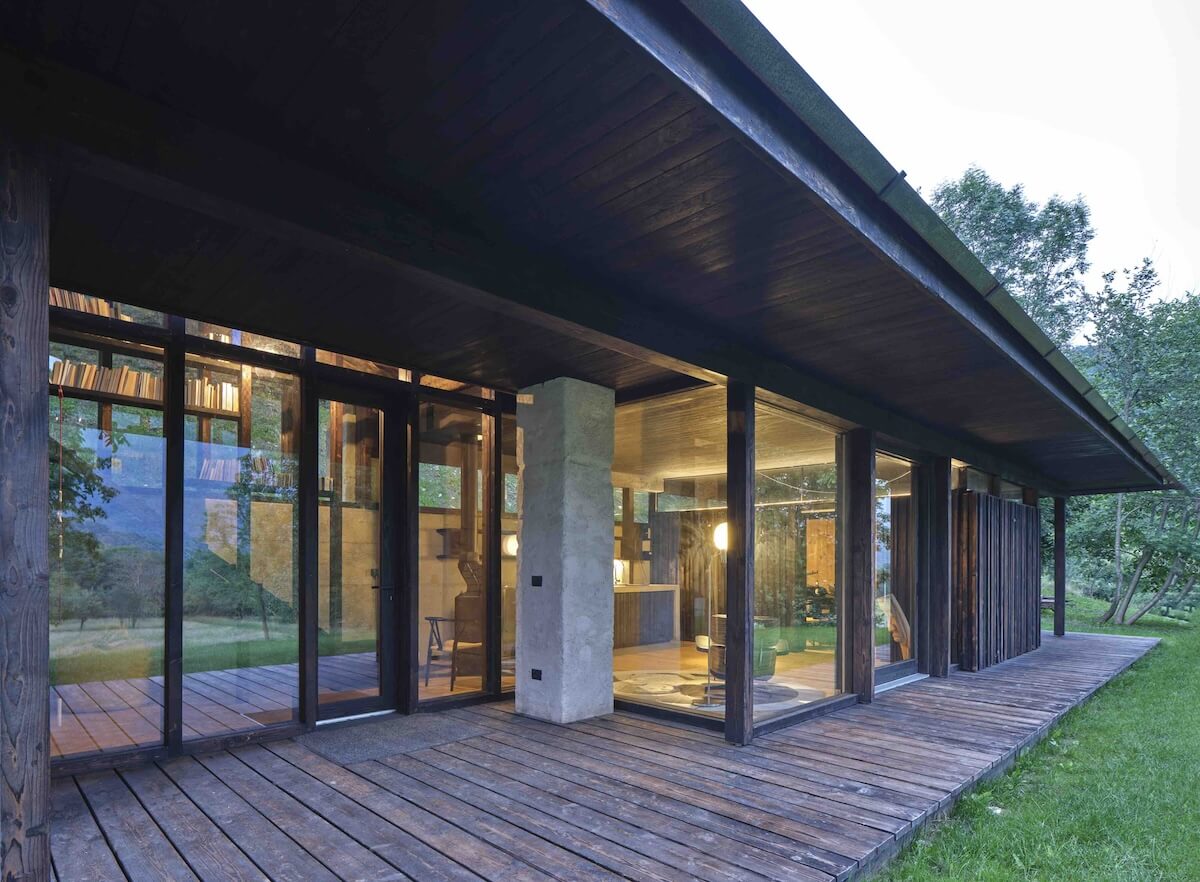






















About Dario Castellino
Dario Castellino was born in Cuneo in 1965 and graduated in architecture from the Polytechnic University of Turin in 1993. In 1994, he founded his eponymous studio, which focuses on architectural design, restoration, urban redevelopment, recovery of religious buildings, museum setups, and the design of residential and tertiary buildings for both public and private clients. He has been involved in the restoration of the former textile factory for the Tucci Russo Contemporary Art Gallery, the restoration of Roccasparvera Castle and the Church of S. Paolo in Caraglio, the recovery of Fortezza Albertina in Vinadio, the enhancement of Linari Castle, the recovery of alpine hamlets includingParaloup, Campofei and Ferriere, the creation of the Victor Salvi Harp Museum, the redevelopment of the squares in Demonte and Treiso, some wine cellars in the Langhe region, and dozens of residential construction projects. He has collaborated with internationally renowned artists and engaged in teaching activities as a contract lecturer at the Faculty of Architecture of the Polytechnic University of Turin. Some of his works have been featured in architecture magazines and books.


